Breaking Barriers
From the Summer 2021 Issue
Interview with SHS grad Emily Thompson, first female to fly F-35 jet in combat
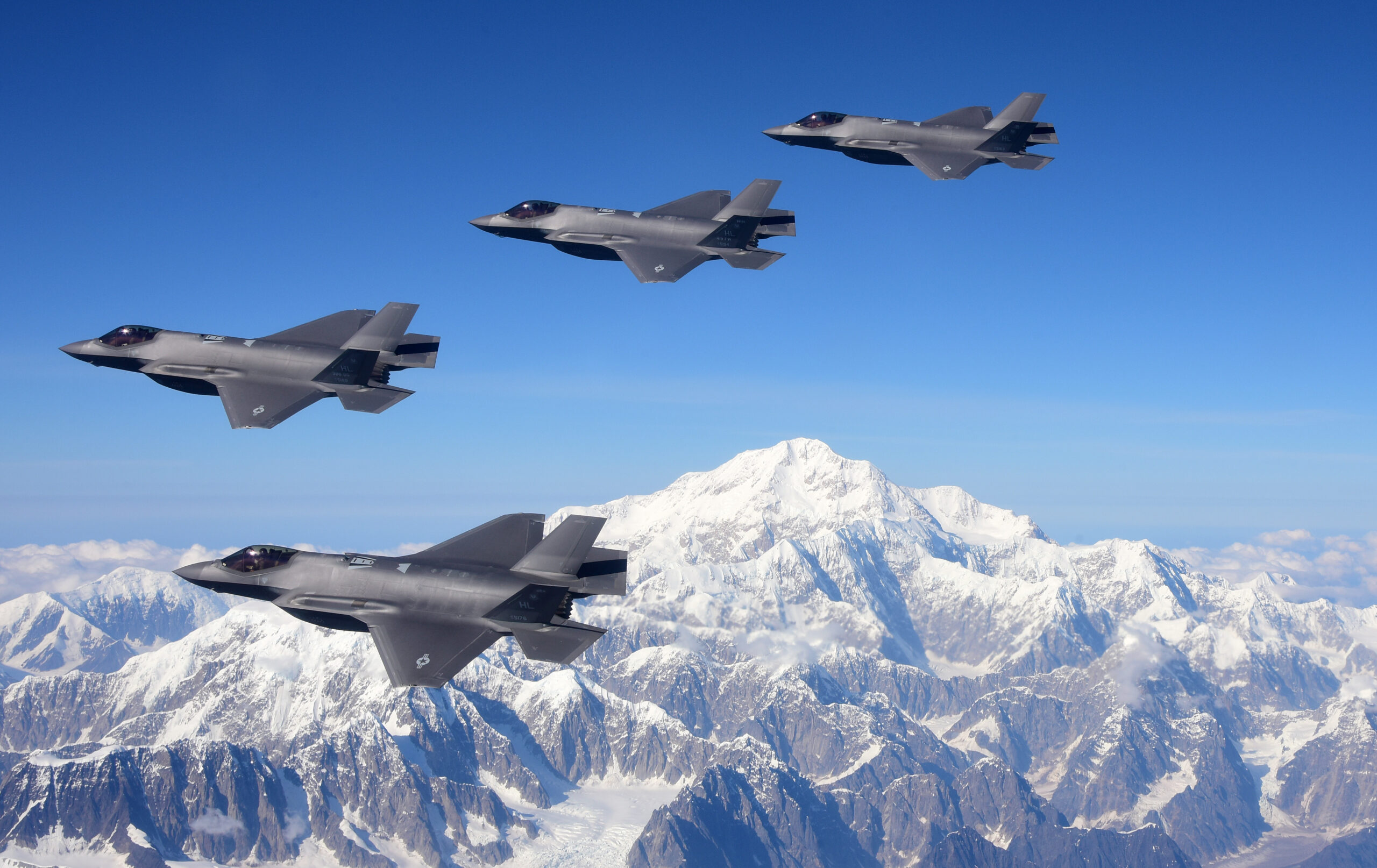
The F-35 flying in formation. Photos Courtesy of U.S. Air force.
Sandpoint High School alumni Captain Emily “Banzai” Thompson made aviation history books in June of 2020 as the first female to fly the F-35A in a combat mission when based out of Al Dhafra Air Base in the United Arab Emirates. Thompson was supported by an all-female crew prior to taking off, marking a milestone in an historically male-dominated field.
Thompson is the second daughter of William and Heidi Thompson, now of Coeur d’Alene. William was in the army and stationed in Germany when he met Heidi, and Emily was born on March 1, 1991, in Germany. The family moved back to the States when Emily was about 4. She graduated from Sandpoint High School in 2009, where she participated in cross country, band, National Honor Society, Academic Decathlon, Math Club, and track, among other activities. One identifying feature for many students at Sandpoint High at the time was the fact that she often drove her motorcycle to school in the fairer months. After high school, she attended the University of Kansas on an Air Force Reserve Officer Training Corps scholarship where she studied aerospace engineering, graduating in 2014.
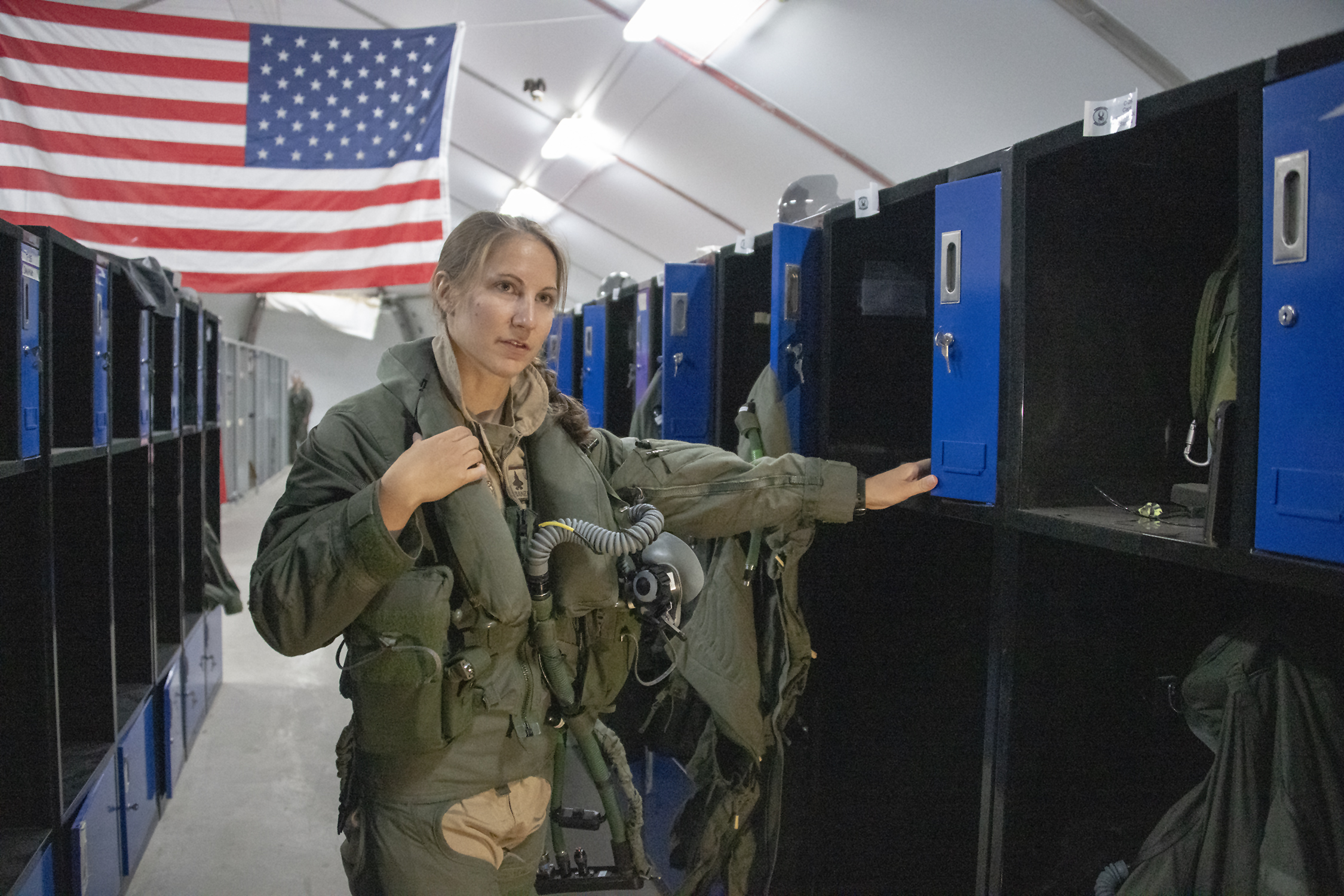
Captain Emily Thompson
Her senior year she was selected to pursue the pilot track of the Air Force and quickly began to shine like a rising star. Airmen and women in the pilot program often are put into two tracks following basic flight school, either heavy or fighters, though there is a rise in drone pilots being selected as well.
Following her completion of the training program, Captain Thompson went to Kunsan Air Base in South Korea for two years, flying the F-16. During that time she had the opportunity to fly to many countries and participate in a multitude of exercises. Near the conclusion of her time in Kunsan she was selected to go back to the
States and train on the F-35. She eventually wound up with the 421st Expeditionary Fighter Wing out of Hill Air Force Base in Utah, where, after an extended period, she found herself on the way to Al Dhafra Air Base. While she was stationed there until December 2020, we were able to connect with Thompson to answer some questions about this achievement and growing up in Sandpoint.
SM: In general terms, what creates the classification of a combat mission, and what does that involve?
ET: Our squadron was picked up to deploy to the Middle East, so we were stationed out of Al Dhafra. We were deployed there as the 421st EFS (Expeditionary Fighter Squadron) with expectations to be deployed there for 6 months in CENTCOM. Any flights we’re doing out there are considered combat missions. You’re carrying live munitions on the aircraft, and you’re going out in support of U.S. interests and our partner nations in the area.
SM: So the difference between that and flying in the States is the live munitions?
ET: Mostly yeah, the big difference is that when we’re in the States we are doing training. We might have live munitions if we’re doing live munitions training. Everything at home station is training.
SM: Before taking off did you know that you would be added to a list of firsts or was it going through your mind?
ET: Honestly, no. Throughout this entire process, I’ve just wanted to fly. When I graduated college I wanted to fly fighters but never with the ambition to be the first. Leading up to the sortie, and stepping up to the aircraft, there were so many who were excited and interested, especially other women. It never really dawned on me that this was a first for someone. I never really thought about it or considered it, it just really didn’t cross my mind until someone else actually brought it up, saying that this might be the first combat mission for a female in the F-35. We did a little research and sure enough, that was the case. It really didn’t impact anything as, just like the other guys with me and all the other females in the past that have flown in combat in other fighters, we’re just going out to do our job. It’s what we train for every day here at Hill, and so it’s just another day on the job once we get out there. It was just another day at work. I’m just another fighter pilot out here doing my job.
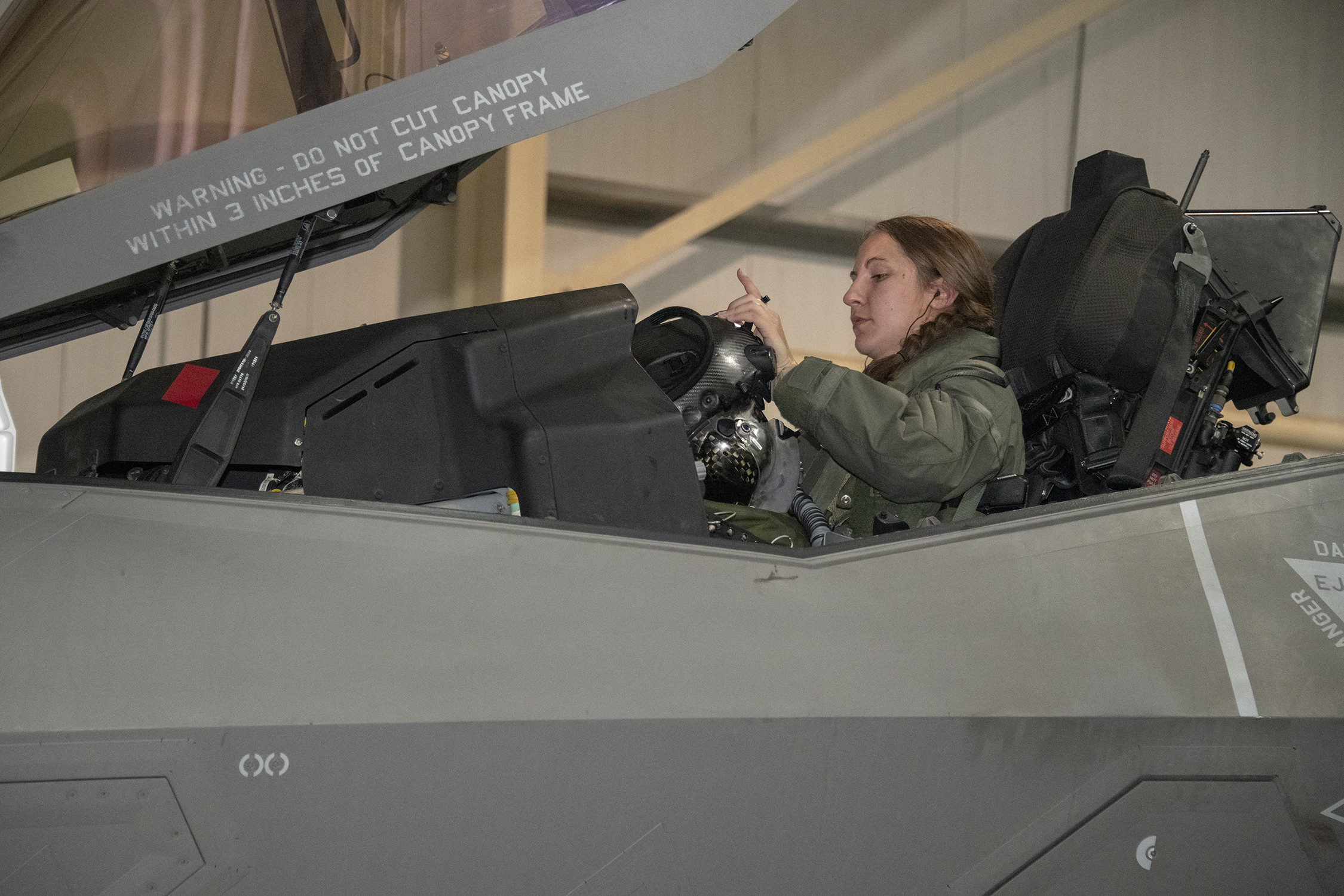
Captain Thompson prepares for take-off.
SM: Were your ambitions to always be a fighter pilot? When did that change and what did you want to do before that?
ET: I think I took a pretty non-standard route. If you talk to a lot of the guys here they have wanted to fly fighters their entire lives, they watched the Thunderbirds when they were 6 or they had other family members who were fighter pilots. I don’t have that inspiring story. I went to college planning on becoming an engineer and 100 percent thought that’s what I’m going to do with the rest of my life. It wasn’t until I was in ROTC I realized that not only can you design and build aircraft, but obviously there are others out there who fly them. It wasn’t until college where I got to go out and fly with some of the others in Cessnas and other planes, as a lot of them had their private pilot’s license at that point. It was then that I realized that while I loved engineering, I loved flying even more. So I figured why not, might as well put my application in and see if I can get a pilot slot. I got selected and went to pilot training. You start in T-6s, which is just a two-seater prop aircraft, and from there you split into either fighters or heavies. I realized pretty quickly I want to be in an airplane by myself, going fast, and drop bombs. That’s when it dawned that the fighter pilot track is what I wanted to do.
SM: What was your experience with flight school?
ET: Stressful, and extremely challenging. I think I was lucky, coming from an engineering background, as a lot of pilots are engineers. [In engineering] you study a lot and work really hard in college, and pilot training was just an extension of that. The expectation is 12-hour days for a year’s duration. The expectation is that it’s on you to study and prepare for both ground training and flights. It was stressful; it was the first time I had ever flown besides just having fun with friends. I honestly felt a little behind, just because it was so new to me, and there were a lot of people that have a good amount of experience going into it, so it felt like I was playing a little bit of catch up for the first couple of months. It was an awesome experience though, the Air Force does a great job of knowing what you need to know and they get you the information quickly and effectively.
SM: What’s the story behind the callsign “Banzai?”
ET: So I can’t tell you the story, it’s a fighter pilot rule that if you want to hear my story you have to get a drink at the bar and we can sit down and talk about it. But I can tell you, for fighter pilots, it’s something you earn, and it’s something that stays with you the rest of your life. No one calls me Emily here, it’s just Banzai. It becomes your new name. I got mine in Korea. Typically you go through a two-month MQT (Mission Qualification Training) as soon as you arrive, at least in the F-16. Within the next few months, they’ll have a naming night, so all of your instructors and peers will come up with a list of names; typically this is something silly you did or mistakes you made. Oftentimes it’s something you did incorrectly and they build it into a funny story or acronym. It followed me to the F-35, though they can ‘hostile rename you’ if you do something worse than what you got your original name for. Typically, though, you’ll have that the rest of your life.
SM: Where all have you been stationed and what did you fly?
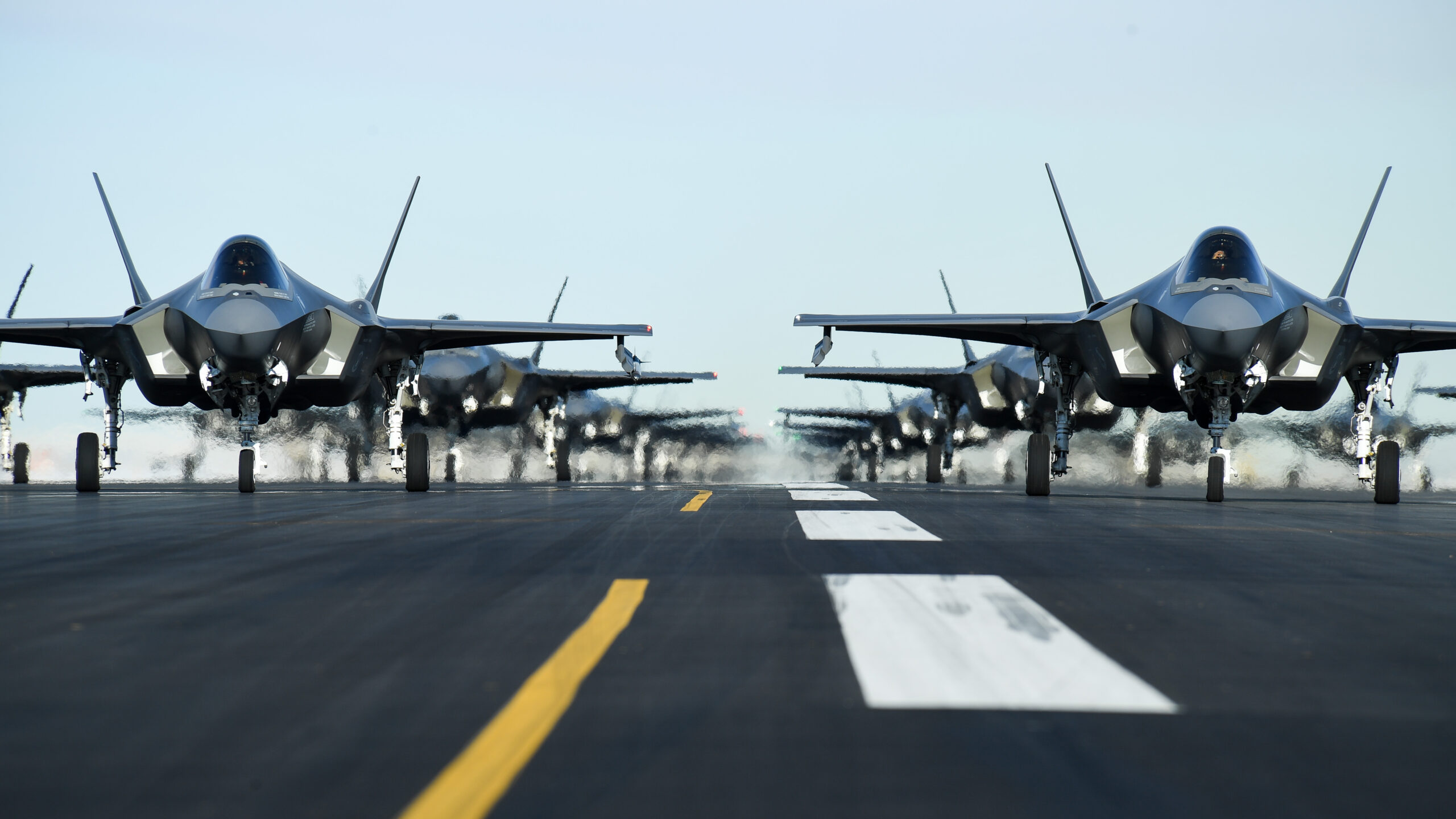
The F-35 taking off in formation.
ET: First I went to an F-16 B course in Tucson, Arizona which is about nine months. From there my first assignment was to Kunsan Air Base in South Korea for about 18 months flying the Viper. From there I was selected for the F-35, so had a five-month transition course at Egland Air Force Base in Florida. From Florida I went to Hill; I’ll probably be here another year before moving once again.
SM: What are your plans for the future?
ET: Right now I have about five years left in my commitment, and I don’t plan on switching out of flying fighters any time soon. I feel like I just started flying, which is weird because I’ve been in the Air Force for a while now. Especially because switching to the F-35, it feels like the beginning. It’s a lot of work and is super stressful, and I think everyone who does this works very hard. In the end, it’s worth it though; I get to take out an expensive aircraft every day and fly for our country which is an awesome experience. But to answer your question, at this point I’m not sure. Typically people think 20 years for a career, I’m not opposed but it’s also not ‘the thing’ I’m going to do, it might depend on my next assignment and how that goes and the one after that. As of right now I enjoy it very much and don’t plan on going anytime soon.
SM: Do you ever just sit there while you’re flying and think about how you’re flying A super expensive piece of equipment?
ET: Not really. I don’t know what people think we do up there, but it’s not Top Gun. When you get in the aircraft and start the engine, it is really busy and all business. You don’t really remember you’re up in the air at 30,000 feet doing the training. It’s almost like you’re at your desk doing your job. You are just so focused on working your sensors, shooting, or dropping your bombs. You’re just so busy doing your tactical mission, that you kind of forget like ‘oh I’m in a fighter jet right now, which is awesome.’ You really have to take a second when there is a lull in the fight or maybe while you’re going to or from the airspace to just say ‘look outside’ or ‘look at those wings behind me, that’s what I’m flying on.’ You honestly forget that sometimes, which sounds crazy, but you’re really focused on doing the job and doing it well, you kind of forget that you’re airborne and in an aircraft.
SM: Have you broken the sound barrier in either the F-16 or F-35? What is that experience like?
ET: We get that question quite often, it’s really the most uneventful thing you’ll experience. We go over Mach 1 often, and you might notice the nose of the plane moving a bit but that’s about it. Unless your eyes are on the readout you might miss it, which can get us in trouble as we aren’t supposed to.
SM: Moving to your life in Sandpoint, was there an experience, or group of people, that inspired you to join the Air Force or become a pilot?
ET: The big step was getting into engineering and I think our teachers at the high school, like Mrs. Search, were a great support. There were so many people in our high school that were super supportive and kind of pushed us in that direction but in a good way. I would say the teachers at the high school were a big part of that.
Additionally, I would say Matt and Angie [Brass] were such a positive influence on all of us growing up to build up a strong foundation of friendship and mentorship. I think that was a big part of it too because we [the class of 2009 on the Cross Country team] had such a good group of individuals that were all super driven and focused on good careers, good paths, good choices. So I would say it’s a combination of that, both the teachers pushing in that direction and suggesting careers for us as well as the extracurricular support.
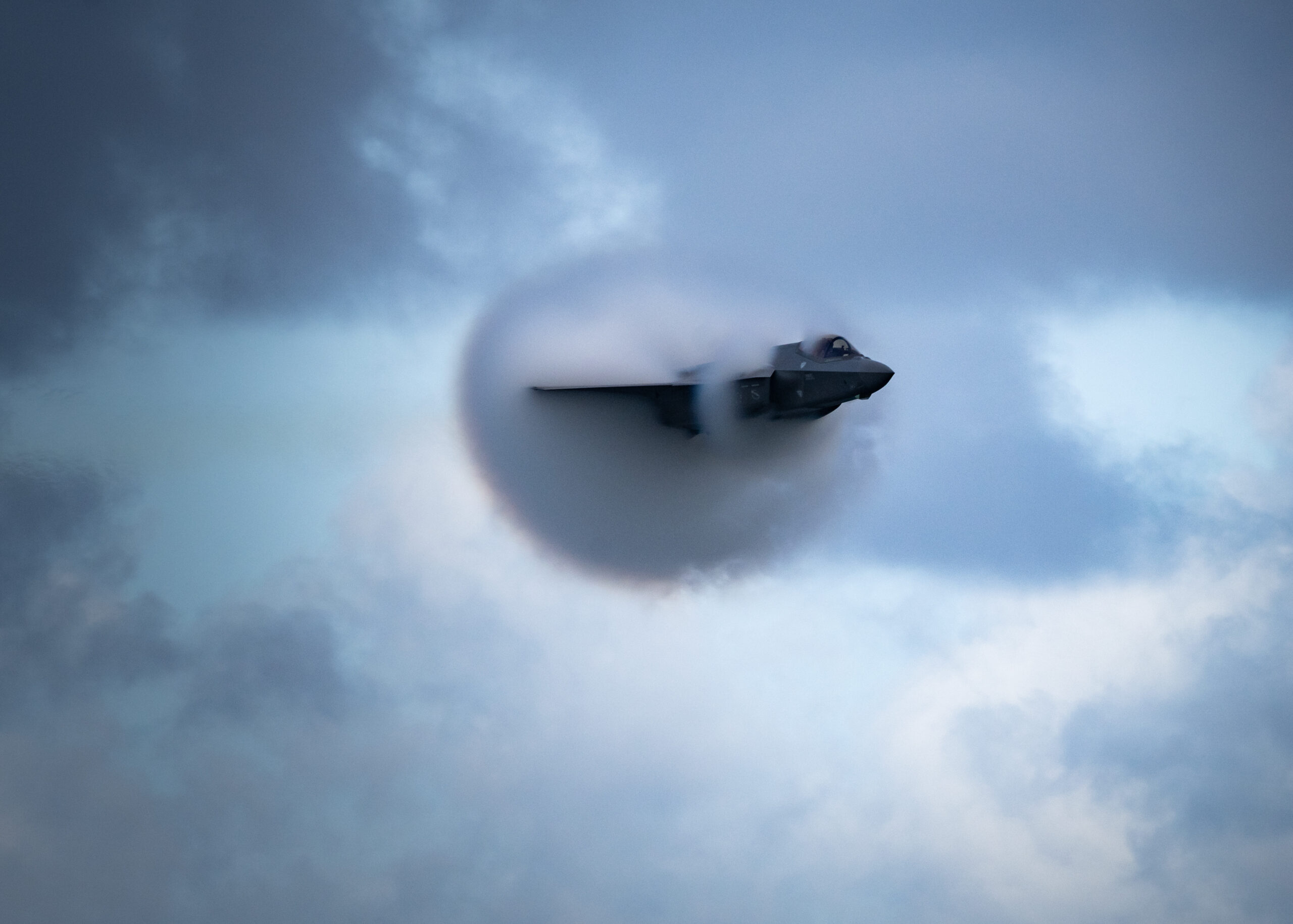
Emily Thompson in flight, breaking the sound barrier.
SM: Do you think your life in Sandpoint helped prepare you for this?
ET: SERE [Survival, Evasion, Resistance, and Escape, located at Fairchild Air Force Base in Spokane, Washington] was kind of enjoyable because I had this mindset of ‘Hey, I’m in my backyard’ versus being from the city and not having the true outdoors experience. The rural living outdoors and outdoor lifestyle was very helpful for that.
SM: What were some of your favorite things to do when you lived in Sandpoint?
ET: Skiing at Schweitzer. I don’t think I ever realized how awesome we had it in Sandpoint with Schweitzer, [how] in the wintertime we all went skiing, and then had this huge lake in the summertime, and then hiking, and backpacking. There are just so many opportunities to do so much there. Maybe not going out to the city, but that isn’t my thing anyway. Just so many things to do outdoors there.
SM: If you could say something to young people, and maybe even more specifically the girls, in Sandpoint, what would you say?
ET: First, don’t doubt yourself. If there is anything that remotely interests you, go do it. If that means leaving the Sandpoint area, or the state of Idaho, just go do it. You only get so many opportunities. Don’t be scared to just go out and do it.
Then, once you’ve set your mind on a path, don’t let anyone tell you that you can’t do it. You are more than capable, the people that are naysayers aren’t the people you should be listening to anyway. There are lots of other people out there who are very supportive about you doing whatever it is you want to do.




Leave a Reply